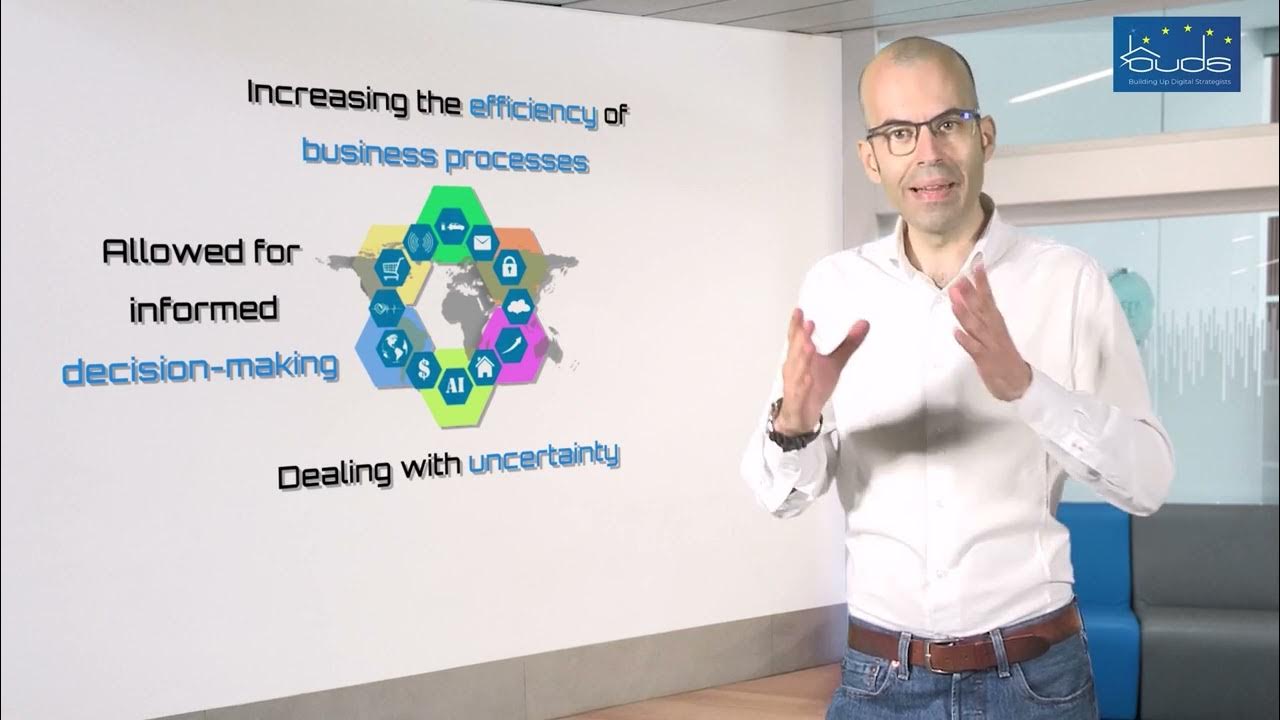Gartner’s Top Tech Trends for 2023
Summary
TLDRThis video explores four strategic technology trends for 2023 driving organizational and digital transformation. It highlights industry cloud platforms, which offer customizable solutions for verticals like banking and healthcare. The rise of superapps providing integrated services is discussed, along with adaptive AI systems that improve decision-making. Lastly, the importance of sustainability in technology is emphasized, predicting that by 2025, a significant number of executives will be held accountable for sustainable tech outcomes.
Takeaways
- 🌟 **Industry Cloud Platforms**: Combine cloud capabilities with customizable solutions for specific industries, enhancing business capabilities and innovation.
- 🚀 **Adaptability & Innovation**: Industry cloud platforms are more adaptable, support faster innovation, and help reduce redundancy for quicker value capture.
- 🤝 **Partnerships & Collaboration**: Goldman Sachs' partnership with AWS exemplifies how industry cloud platforms can offer advanced tools to clients.
- 📈 **Market Prediction**: By 2027, over 50% of enterprises are expected to use industry cloud platforms to accelerate business initiatives.
- 👥 **Fusion Teams**: Suggests creating teams of business technologists and IT stakeholders to understand cloud applications in business capabilities.
- 📱 **Superapps**: A trend towards mobile-first experiences, where superapps provide a broad range of services, increasing user engagement.
- 🛍️ **Consumer Experience**: Superapps aim to reduce friction in user experiences, offering a one-stop solution for various services.
- 📊 **Adaptive AI**: AI systems that learn and adapt to changes, crucial for dynamic conditions like supply chain disruptions.
- 💡 **AI Model Production**: Enterprises with adaptive AI systems are predicted to have 25% more AI models in production by 2026.
- 🌱 **Sustainability**: A growing focus on using technology to deliver sustainable outcomes, with executives being held responsible by 2025.
Q & A
What are the four top strategic technology trends for 2023 mentioned in the script?
-The four top strategic technology trends for 2023 mentioned are industry cloud platforms, superapps, adaptive artificial intelligence, and sustainability.
How do industry cloud platforms add value to businesses?
-Industry cloud platforms add value by combining traditional cloud capabilities with customizable solutions to support specific verticals, making them more adaptable, supporting faster innovation, and allowing for quicker value capture.
What is an example of an industry cloud platform in finance?
-Goldman Sachs is partnering with AWS to offer an industry cloud platform called 'financial cloud for data', which allows clients to use the same AI tools and analytics that Goldman Sachs uses on its trading floor.
What is the predicted usage of industry cloud platforms by 2027?
-It is predicted that by 2027, more than 50% of enterprises will use industry cloud platforms to accelerate their business initiatives.
What is a superapp and how does it differ from a composite mobile app?
-A superapp is a platform that provides more personalized experiences through built-in miniapps covering a broad range of uses, unlike a composite mobile app which is simply a collection of different apps.
How does a superapp increase value for users?
-Superapps increase value by reducing friction throughout the user experience, leading to more engagement for customers, partners, and employees.
What is the predicted daily active user rate for superapps by 2027?
-It is predicted that by 2027, more than 50% of the global population will be daily active users of multiple superapps.
How does adaptive artificial intelligence differ from traditional AI systems?
-Adaptive AI differs from traditional AI systems by being able to revise its own code to adjust for real-world changes that weren't known or foreseen when the code was first written.
What is the predicted impact of enterprises building adaptive AI systems by 2026?
-By 2026, enterprises that build adaptive AI systems are predicted to have 25% more AI models in production than those that don't.
Why is sustainability important in the context of technology trends?
-Sustainability is important as it's not only about making the IT infrastructure and solutions sustainable but also using technology to deliver sustainable outcomes for the organization and customers.
What is the predicted responsibility of executives regarding sustainable technology outcomes by 2025?
-By 2025, it is predicted that 75% of executives will be responsible for sustainable technology outcomes, and 25% will have compensation linked to their sustainable technology impact.
Outlines

このセクションは有料ユーザー限定です。 アクセスするには、アップグレードをお願いします。
今すぐアップグレードMindmap

このセクションは有料ユーザー限定です。 アクセスするには、アップグレードをお願いします。
今すぐアップグレードKeywords

このセクションは有料ユーザー限定です。 アクセスするには、アップグレードをお願いします。
今すぐアップグレードHighlights

このセクションは有料ユーザー限定です。 アクセスするには、アップグレードをお願いします。
今すぐアップグレードTranscripts

このセクションは有料ユーザー限定です。 アクセスするには、アップグレードをお願いします。
今すぐアップグレード5.0 / 5 (0 votes)






